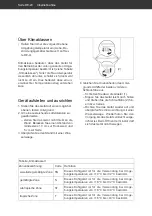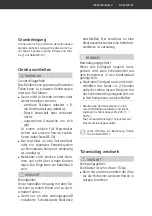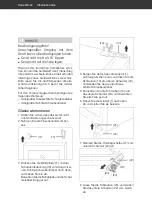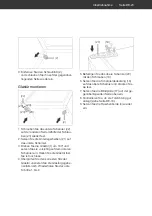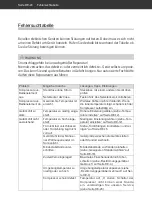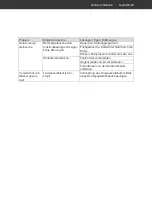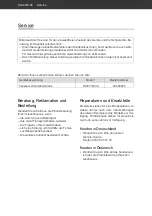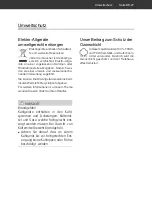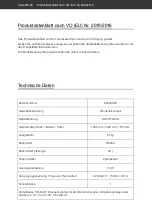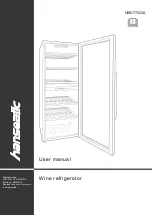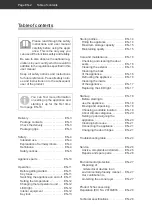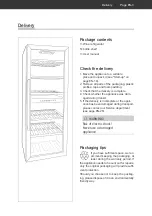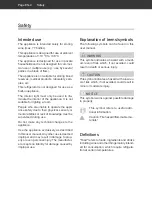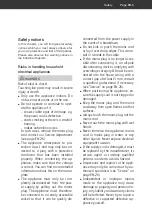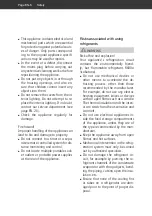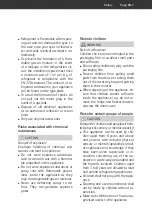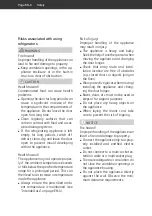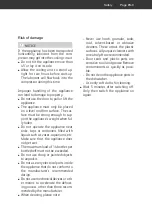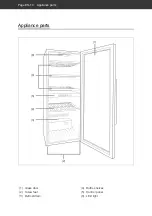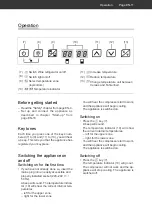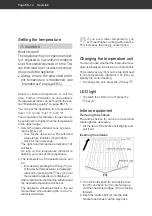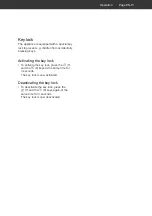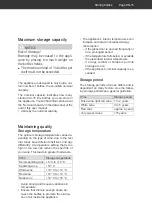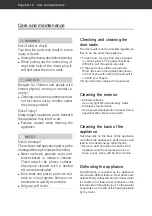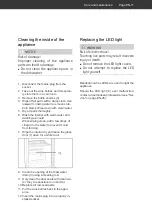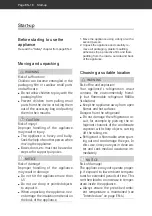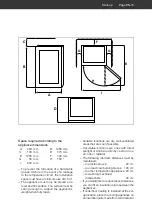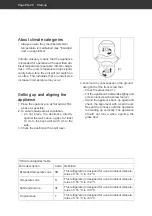
Safety
Page EN-6
■
This appliance contains electrical and
mechanical parts which are essential
for protection against potential sourc-
es of danger. Only parts correspond-
ing to the original appliance specifi -
cations may be used for repairs.
■
In the event of a defect, disconnect
the mains plug before carrying out
any extensive cleaning work or before
repositioning the appliance.
■
Do not put any objects in or through
the housing openings, and also en-
sure that children cannot insert any
objects into them.
■
Do not remove the covers from the in-
terior lighting. Do not attempt to re-
place the interior lighting. If in doubt,
contact our service department (see
page EN-26 ).
■
Check the appliance regularly for
damage.
Fire hazard!
Improper handling of the appliance can
lead to fi re and damage to property.
■
Do not connect to a timer or a sepa-
rate remote-controlled system for dis-
tance monitoring and control.
■
Do not locate multiple portable sock-
et outlets or portable power supplies
at the rear of the appliance.
Risks associated with using
refrigerants
WARNING
Risk of fi re and explosion!
Your appliance’s refrigeration circuit
contains the environmentally friend-
ly, but fl ammable refrigerant R600a
(isobutane).
■
Do not use mechanical devices or
other means to accelerate the de-
frosting process, other than those
recommended by the manufacturer.
For example, do not use any electric
heating equipment, knives or devices
with an open fl ame such as a candle.
The thermal insulation and the interi-
or are scratch and heat-sensitive and
can melt.
■
Do not use electrical appliances in-
side the food storage compartments
of the appliance, unless they are of
the type recommended by the man-
ufacturer.
■
Keep the appliance away from open
fl ames and hot surfaces.
■
Mechanical intervention in the refrig-
eration system must only be carried
out by authorised specialists.
■
Do not damage the refrigerant cir-
cuit, for example by piercing the re-
frigerant channels of the condensate
evaporator with sharp objects, bend-
ing the piping, cutting open the insu-
lation, etc.
■
Ensure that none of the cooling fi ns
or tubes on a refrigerator are dam-
aged prior to the point of proper dis-
posal.

